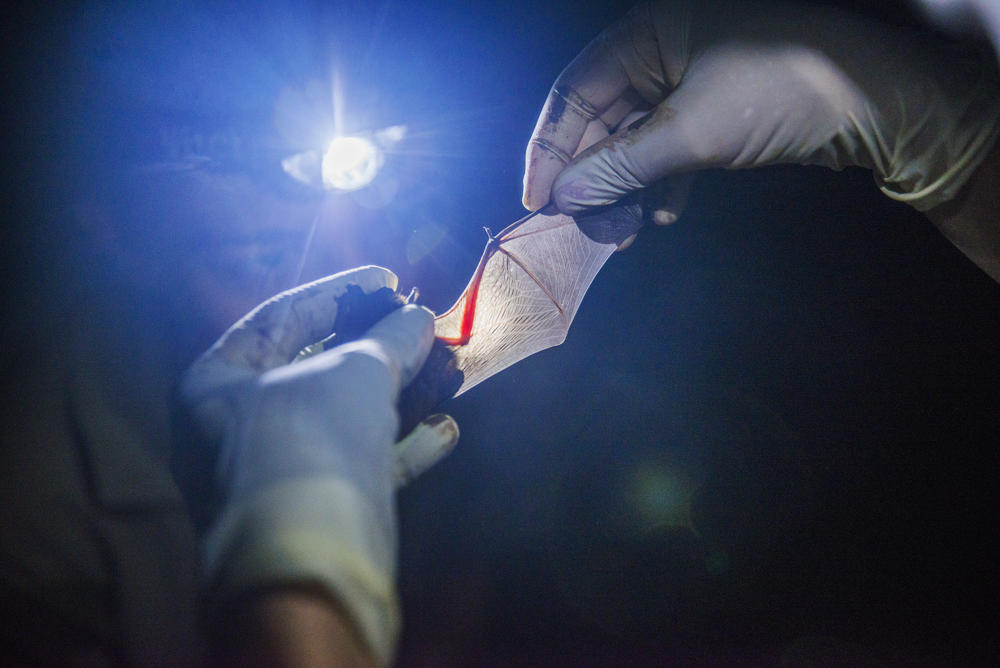Section Branding
Header Content
Could You Scoot Over? Moving Ga. Bats For Highway Work
Primary Content
Not too long ago, biologists with Georgia’s Department of Natural Resources didn’t know bats in the state were using bridges for roosts.
Caves in North Georgia? Yes. Hollowed out trees down south? Sure. But only recently did they learn that bats were using manmade highway bridges in Georgia the same way you may have seen them in famous places like the Congress Street Bridge in Austin, Texas.
Could You Scoot Over? Moving Ga. Bats For Highway Work
This became important recently when the Georgia Department of Transportation got ready to do regularly scheduled maintenance on a bridge on Interstate 75 near the north Georgia town of Calhoun.
“Well, this bridge is the largest known roost we have in Georgia for that,” said Trina Morris, biologist and bat expert with the DNR. “We've known that this project with coming up for years.”
Since she and others knew the project was coming for such a long time, that gave them time to learn some things about the habits of bridge roosting bats ahead of time. Like that the roosts are a year round thing, not seasonal. And they’ve been able to give GDOT advice to avoid work on some bridges in times when young pups might first be flying.
The work in Calhoun of sealing up the big seams between slabs of concrete on the bridge had to be done around the start of October for reasons of temperature, though, with little wiggle room for rescheduling. And when the old sealant in the cracks would come out, the bats would be newly exposed to the sky, like they had a hole in their roof.
“We can actually see bats right at the surface of I-75 underneath this broken down silicone,” Trina Morris said. “You can just sometimes look down and there's a bat face staring at you as cars are flying by right next to him." The bats were a mixed colony of big brown and Mexican free-tailed bats.
What Morris didn’t expect is that once the bats were exposed, they actually didn’t seem to care all that much. Still, the thousands of bats would not endure the spraying of adhesives and sealants into the gaps they were crowded into sometimes four and five deep. So to give GDOT room to work, Morris came up with a simple solution.
“They have a grip with their toenails,” Morris said. “So I was just kind of nudging their toes so that they would sort of all go down a little further and get away from where they were putting that foam rod in."
The foam rod was something like a pool noodle. GDOT used that to keep bats out of the way once Morris got them to scooch over. She used a yard stick most of the time, though she said tight spots required a more refined tool nicknamed “The Batula.” That was just a kitchen spatula straightened out with a heat gun to get into the real crevices.
By working together, DNR and GDOT were able to make the bridge safe for traffic and keep the bats out of harm’s way. Morris said the long term benefit is that GDOT now knows to keep an eye out for bat roosts when they plan work on other bridges, the same way they already look out for bird nests.
“That's a huge step that the GDOT has taken to find these sites that could have a problem well before any work starts on the project so we have time to plan exactly what needs to happen,” Morris said.
And while the Calhoun bridge colony is the largest bridge roost Georgia DNR knows of now, there could be another big bat bridge roost yet to find.


